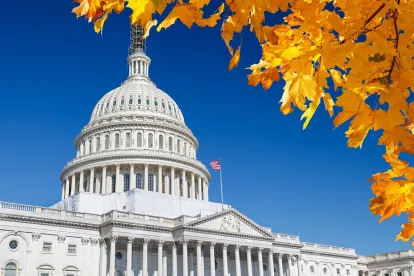Supreme Return.
The Supreme Court of the United States kicked off its 2019 term this week with a few blockbuster oral arguments. On October 9, 2019, the Court heard oral argument in three cases concerning whether gender identity and sexual orientation are protected under Title VII of the Civil Rights Act of 1964. Nonnie L. Shivers has the details. The Court usually reserves their opinions on such high-profile cases until June, so we are unlikely to get a final decision anytime soon. Whatever the Court rules, the decision is bound to be a significant topic on the campaign trails as we approach the 2020 elections. In addition, the Buzz will be watching to see how the eventual decision will impact the political prospects of the Equality Act.
EEOC: “We’ve Collected Enough Data. May We Be Excused?”
On October 8, 2019, the Equal Employment Opportunity Commission (EEOC) and the Office of Management and Budget (OMB) filed a motion with the United States District Court for the District of Columbia requesting an “order confirming that the Component 2 data collection is complete.” The motion notified the court that “as of October 8, 2019, 75.9% of eligible filers had submitted Component 2 data,” which exceeds the 72 percent target rate. There is also another reason that the EEOC wants to get out of the wage and hour data collection business: it notes in the motion that it will spend $1.5 million to continue collecting Component 2 data for six more weeks beyond the September 30, 2019, deadline, and that any further collection will cost approximately $150,000 each week. Of course, the Buzz will be watching to see how any action on the motion might impact the ongoing appeal of the court’s underlying decision, as well as the Commission’s decision not to seek renewal of the Component 2 data collection.
DOL Tip Proposal Drops.
On October 8, 2019, the U.S. Department of Labor’s (DOL) Wage and Hour Division (WHD) issued a proposed rule regarding its tip regulation under the Fair Labor Standards Act. This is the next step in a long saga that has included input from the judicial and legislative branches along the way. The proposal would allow employers that do not take a tip credit to include employees who don’t normally receive tips (e.g., cooks and dishwashers) in a mandatory tip pool. The proposal also addresses the “dual jobs” issue by permitting employers to take a tip credit for time that tipped employees spend doing non-tipped work, as long as the work is performed in a reasonable time immediately before, immediately after, or while performing the tipped duties. James T. McBride has more.
NLRB Extension.
Late last week, the National Labor Relations Board (NLRB) extended the comment deadline for its proposed changes to its union election rules. The 60-day extension gives stakeholders until December 10, 2019, to comment on the proposal.
OSHRC Nominee Announced.
President Donald Trump announced his intention to nominate Amanda Wood Laihow to serve as a commissioner on the Occupational Safety and Health Review Commission (OSHRC). Eric E. Hobbs and Davis Jenkins have the details on Laihow’s background. If Laihow is confirmed, OSHRC would return to a functioning quorum.
President Issues Executive Orders on Guidance Documents.
On October 9, 2019, President Trump issued two executive orders intended to address agencies’ practice of making policy through the issuance of guidance documents, answers to frequently asked questions (FAQs), or other subregulatory means, rather than through the Administrative Procedure Act process. Sometimes referred to as “policymaking via memo,” this practice is often criticized because it provides the regulated community with no notice or input regarding changes to policy. In the labor and employment policy realm, examples of this include documents such as the WHD’s 2015 Administrator’s Interpretations on independent contractor and joint employment, as well as United States Citizenship and Immigration Services (USCIS) documents such as its memorandum regarding third-party placement of H-1B holders (hopefully, USCIS is cc’ed on these executive orders). The first executive order states that these guidance documents can’t, on their own, form the basis of enforcement actions, and that such actions must be pursued only when they apply standards of conduct that are publicly available, so as not to cause unfair surprise. The second executive order requires agencies to make guidance documents easily accessible on their respective websites and requires issuing agencies to receive public comments prior to issuing final guidance documents. While these documents might not necessarily be breaking too much new ground, the Buzz is curious to see what impact, if any, they will have on agencies’ subregulatory activities.
Fat Bear Week Crowns a New Queen.
The National Park Service (NPS) has certainly come a long way since its founding in 1916, when President Woodrow Wilson signed the National Park Service Organic Act “to provide for the enjoyment of the scenery, natural and historic objects, and wild life in such manner and by such means as will leave them unimpaired for the enjoyment of future generations.” At that time, there were 35 different national parks—Yellowstone was named the first national park back in 1872—but they were managed under different agencies, such as the War Department and the Department of Agriculture.
These days, the NPS covers more than 84 million acres in 50 states, the District of Columbia, American Samoa, Guam, Puerto Rico, Saipan, and the Virgin Islands. Oh, and the NPS also boasts a Fat Bear Week, when the public can vote on which of a series of bears they think has done the best job of fattening up for winter hibernation. Earlier this week, the NPS declared Holly (Bear #435) the 2019 Fat Bear Week champion. While the Buzz is always wary of pro-bear propaganda, we think this is at least the second-best bear-related marketing campaign that calls attention to the NPS’s priorities.




 />i
/>i

